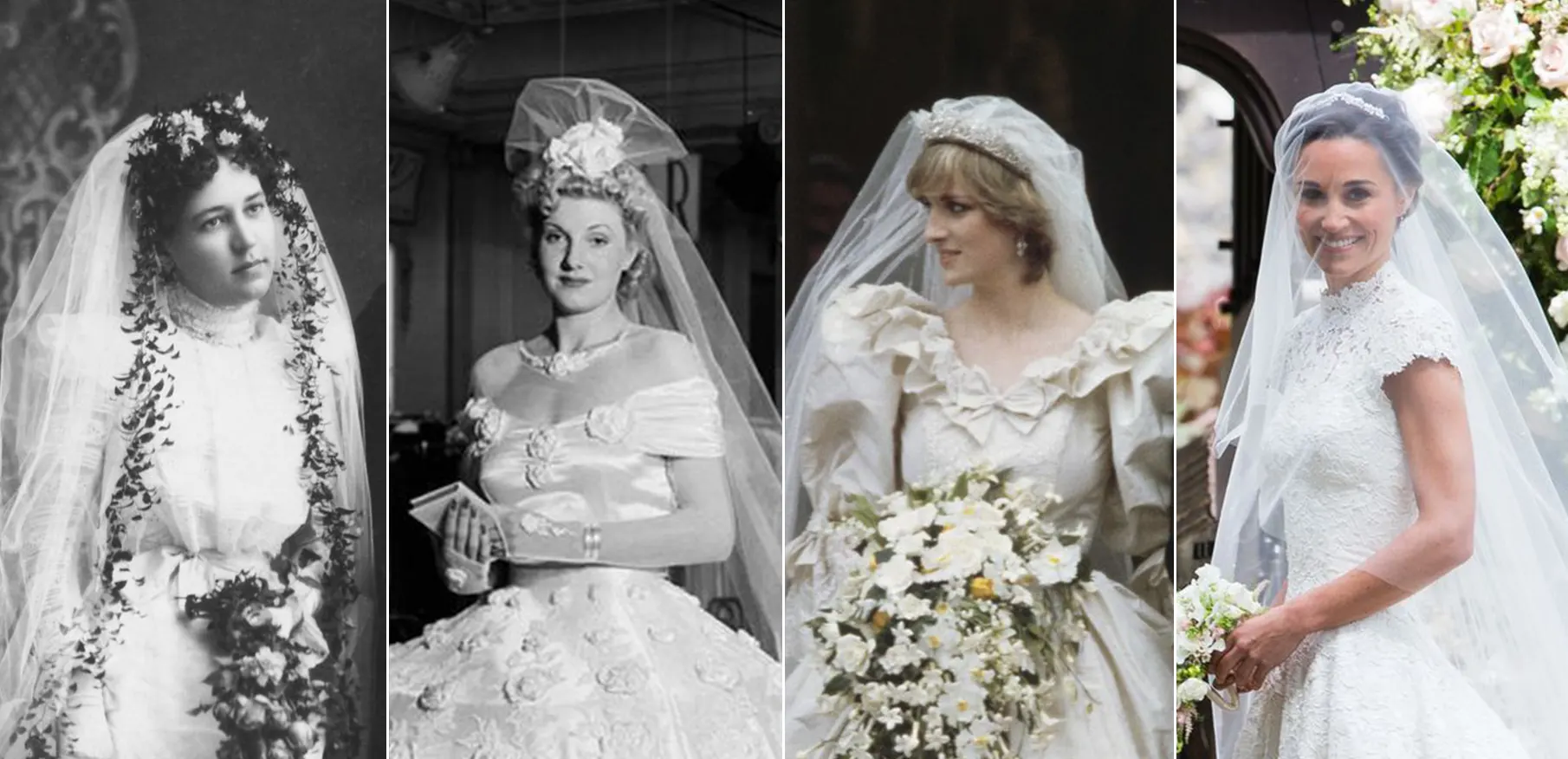Cultural, social, and fashion trends have influenced the evolution of wedding dresses. From
ancient civilizations to the present day, wedding dresses have transformed in style, silhouette,
fabric, and embellishments. In this blog post, we will explore the significant changes and trends
that have shaped wedding dress designs over the centuries.
- Ancient Civilizations: Wedding ceremonies have been a part of human culture for
thousands of years. In ancient civilizations such as Egypt, Greece, and Rome, wedding
dresses were typically simple and modest, reflecting the cultural norms and customs of
the time. White or light-colored robes were standard, symbolizing purity and fertility.
Embellishments like gold thread, beads, and jewels were used to add opulence to the
dresses of wealthy brides. - Medieval Era: During the Middle Ages, wedding dresses varied based on social class and
region. Royalty and nobility often wore lavish gowns made from expensive fabrics like
silk, velvet, and brocade. These dresses featured intricate embroidery, elaborate trains,
and voluminous sleeves. The dress’s colour was not always white, with red and blue
being popular choices as well. Commoners would wear simpler versions of these gowns,
made from more affordable materials. - Renaissance and Baroque Period: In the Renaissance and Baroque periods, wedding
dresses became more elaborate and luxurious. Queens and princesses influenced bridal
fashion with ornate gowns featuring fitted bodices, wide skirts, and puffed sleeves. The
dresses were often made from rich fabrics, like satin and velvet, adorned with pearls,
lace, and gold-threaded embroidery. High necklines and tightly corseted waists were
popular, emphasizing the hourglass silhouette. - Victorian Era: The Victorian era brought a significant shift in wedding dress styles.
Queen Victoria’s wedding in 1840 had a profound influence on bridal fashion. She chose
a white gown, deviating from the tradition of colored wedding dresses. This sparked a
trend that continues to this day. Victorian wedding dresses featured voluminous skirts,
fitted bodices, and long sleeves. Delicate lace and tulle were popular fabrics, and trains
became longer and more elaborate. Veils also became an essential accessory during this
time.
- Early 20th Century: At the beginning of the 20th century, wedding dress styles were
influenced by the Art Nouveau and Edwardian fashion movements. Dresses became
softer and lighter, with flowing lines, high necklines, and empire waistlines. Fabrics like
chiffon and silk were commonly used, adorned with lace and embroidery. The hourglass
silhouette was still emphasized, but with a softer, less restrictive approach. - 1920s – The Jazz Age: The 1920s brought a dramatic shift in wedding dress styles,
reflecting the spirit of the Jazz Age. With the rise of the flapper culture, dresses became
shorter, looser, and more relaxed. The straight, boyish silhouette was favored, and
dropped waistlines became popular. Fabrics like silk, satin, and chiffon were used, often
with intricate beading and sequin embellishments. Headbands and short veils replaced
traditional long veils, and cloche hats were also worn. - 1930s – The Glamorous Era: During the Great Depression, wedding dresses became
more economical and subdued. Bias-cut gowns with sleek silhouettes gained popularity,
highlighting feminine curves. The use of lace and silk remained but with less
extravagance. Brides often wore gloves and small veils or hats. With the advent of
Hollywood, bridal fashion was influenced by glamorous movie stars, and wedding
dresses took on a more sophisticated and elegant look. - 1940s – World War II and Post-War Fashion: World War II significantly impacted
wedding dress styles. Resources were limited, and rationing affected the availability of
fabrics. - Present Age: In the present age, wedding dresses have become a reflection of individual
style and personal preferences. Today, Brides have a wide range of options, allowing
them to express their unique tastes while still honoring traditional and contemporary
elements, variety of silhouettes, focus on comfort, emphasis on detailing and
embellishments.
In conclusion, the evolution of wedding dresses throughout history showcases the dynamic
nature of fashion and the influence of cultural, social, and individual preferences. From the
simple and modest garments of ancient civilizations to the opulent gowns of the Renaissance,
the white wedding dress trend sparked by Queen Victoria, the liberation of styles in the 1920s,
and the blend of traditional and contemporary elements seen in modern times, wedding
dresses have continuously transformed.
Over the centuries, wedding dresses have shifted in silhouette, fabric, color, and
embellishments, reflecting each era’s prevailing trends and values. The evolution of wedding
dresses highlights the importance of weddings as significant cultural and personal events,
where attire plays a symbolic role in representing purity, prosperity, social status, and individual
expression.
Today, wedding dresses encompass a wide range of styles, catering to diverse tastes and body
types. Brides can choose from various silhouettes, fabrics, colors, and design details, allowing
them to personalize their attire to reflect their unique style and personality.
Ultimately, the evolution of wedding dresses showcases the ever-changing nature of fashion
and the significance of weddings as moments of celebration, love, and cultural expression.
While traditions and customs may vary across cultures and time periods, wedding dresses
continue to be a powerful symbol of love, commitment, and individuality, capturing the essence
of each couple’s journey and the spirit of their special day.


